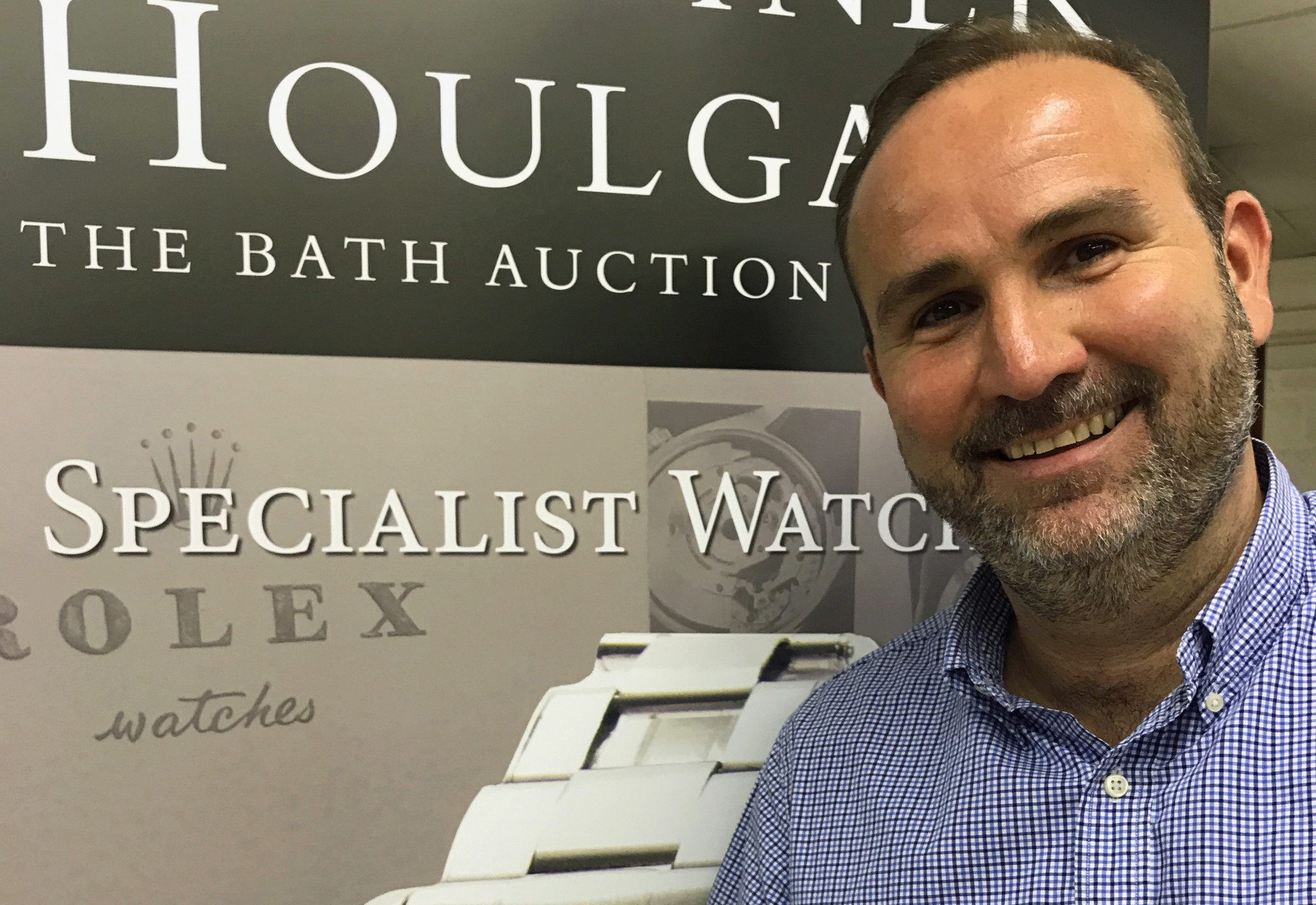Gardiner Houlgate is one of the premier firms of auctioneers in the UK, handling thousands of lots a year in 46 specialist auctions.
David Hare, director at the Wiltshire-based auction house, spoke to WatchPro about the challenges a modern auctioneer faces.
WatchPro: How many watch auctions does Gardiner Houlgate hold on average every year?
David Hare: Gardiner Houlgate has been holding dictated horology auctions for nearly 30 years, with three large sales each year to include specialist watch sales, held in February, May and October. The next sale scheduled for October 25, where entries are currently invited up to October 2. Not just to include wristwatches, within these auctions you will also find pocket watches dating from the 17th century through to 20th century examples and also included is a Watchmaker’s Workshop section where many an obsolete watch spare can be found.
WP: How are you finding the second-hand watch market at the moment compared to the last few years?
DH: The second-hand watch auction market is proving extremely popular as coverage of the auctions would suggest. It is certainly buoyant for particular high-end brands, with increasing demand and interest from international clients.
WP: Which brands in particular prove to be the most consistently popular in your sales?
DH: Quality brands speak for themselves and are always well received. Anything Rolex brings good interest, but maybe we are just stating the obvious. It’s not just all about the high end; some very good quality timepieces are sold at reasonable sums compared to their respective retail values. We are also seeing good solid interest in the vintage and military market, often selling out each auction.
WP: To what extent is the landscape of the traditional auction house model changing?
DH: The traditional auction house model has certainly changed for the specialist companies. Auctioneers nowadays are expected to, and should, offer the complete service as this is often expected from the client. A question we are quite often asked is “what do you do when you have no auction?” No, not a holiday!
20/30 years ago you would go to an auction, bid, pay and take it away, sold as seen. How times have changed!
From the point of entry the process begins – discussing the estimate, cataloguing the piece and assessing the condition, photography, pre-sale enquiries, the auction, accepting payments, post-sale queries and then providing delivery options.
WP: How much have you had to embrace the internet? What percentage of bids are made online compared to physically in the auction room?
DH: Embracing the internet and social media is a simple question: you have to. You cannot expect to be successful without offering the personal service and expertise to your clients. This does not happen overnight and takes many years to establish the confidence and your reputation. A perfect example: we have a client who has spent over half a million pounds with us over the past couple of years, but not viewed any of the watches personally and yet is still delighted with the purchases. It’s not all at this level, but the principle is the same whether a £100 purchase or £150,000.
Personally, the one downside from the internet is the lack of attendance at the auction. Whilst we still see a good room atmosphere it’s no surprise to see a downturn in the number of clients attending the auction; why would you if you can bid at home, on your phone or tablet? From an auctioneer’s point of year, this is a real shame as I have often taken great pleasure in meeting our clients personally, some of whom have become good friends and, trust me, you can learn from. Nowadays too often it is a case of sold to the internet no. 8000, but who?
That’s progress, they say.

